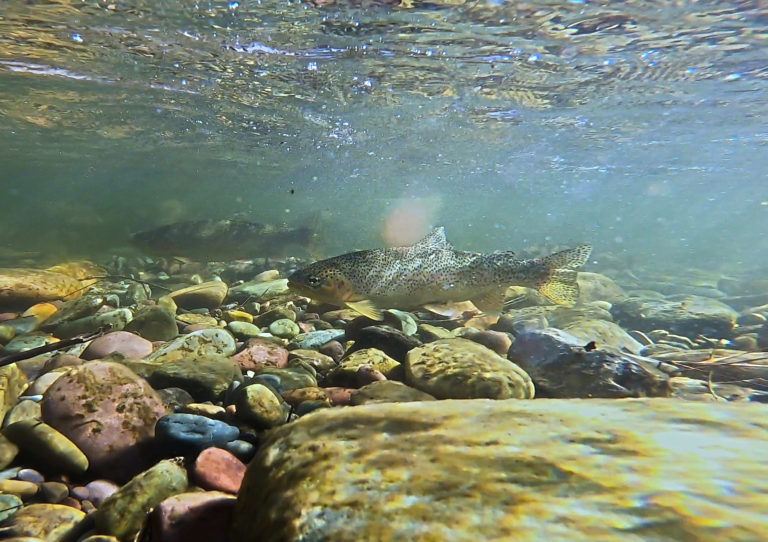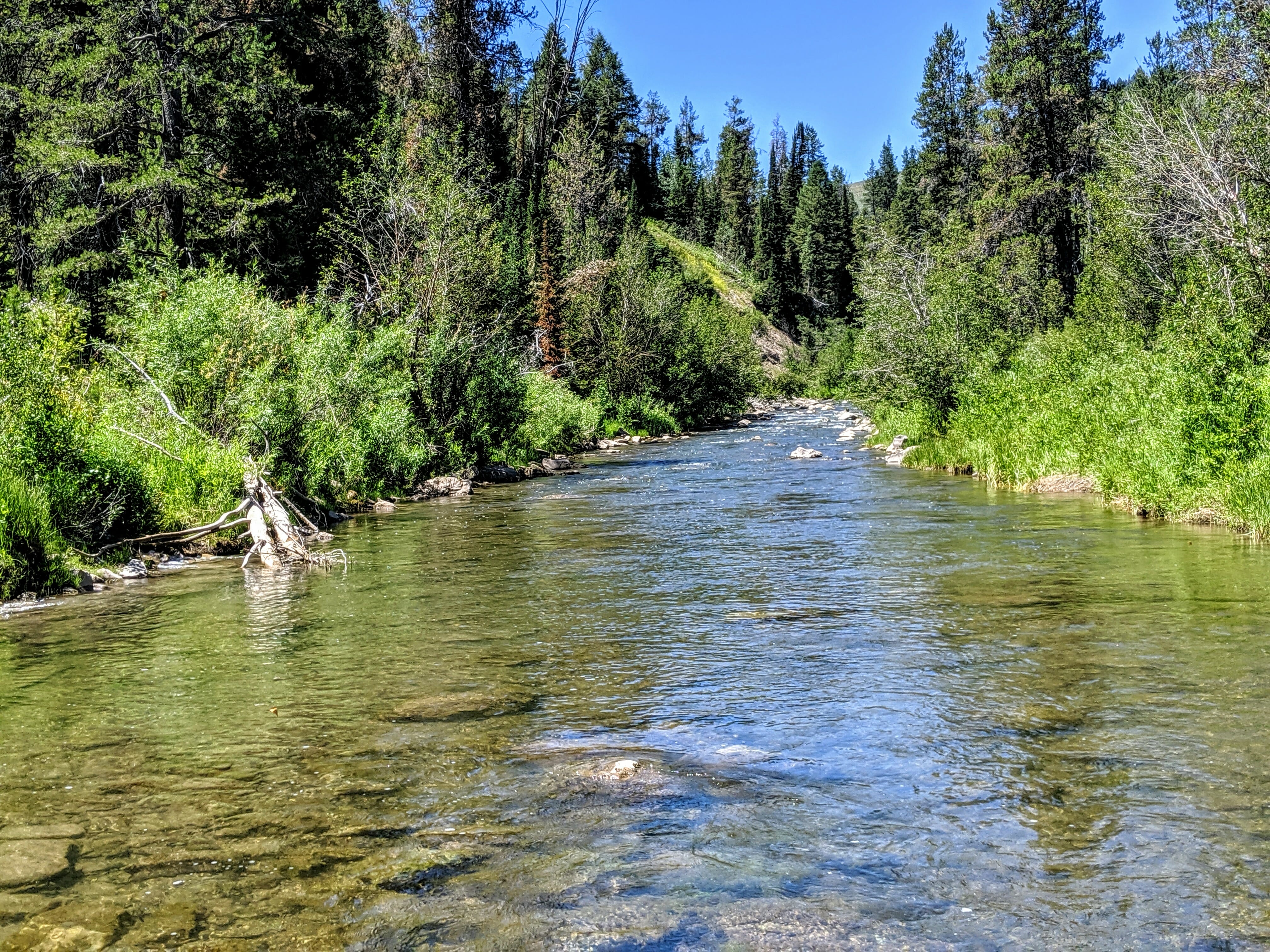Where to Look: Understanding Trout Habitat
Look for any features and disturbances in the river flow: corners and bank protrusions, rocks and trees, current lines and seams. You’ll soon see and realize that, because of the ways the river flows, how pools funnel into riffles and turn left and right, the current lines are places where most of the food gets concentrated. These are the feed lines, and the edges of those are where you’ll find the most fish.
Of course, the river is a complex, three-dimensional environment, even though, looking down from above, we perceive it in only two dimensions. The features we see on the surface—cushions and lee spots, split currents and eddies, pockets of turbulence and calm—also occur in the vertical plane. And the trout are likely to take advantage of those because the water’s depth also affords shelter and camouflage.
Trout are highly adaptable fish that can thrive in a variety of aquatic environments, but they have specific preferences when it comes to their habitat. To become a successful trout angler, it’s crucial to understand the characteristics of rivers and streams that trout prefer, the factors that influence their habitat selection, and how to identify prime trout holding spots.
Trout are typically found in clear, cold, and well-oxygenated waters. They prefer streams and rivers with a stable flow and a variety of habitats, ranging from shallow riffles to deep pools. These water bodies often have rocky bottoms, which provide ample cover and habitat for aquatic insects, a primary food source for trout.

Several factors influence where trout choose to live within a river or stream:
Temperature: Trout are cold-water fish and thrive in water temperatures between 50°F and 60°F (10°C to 15.5°C). They seek out areas with cooler temperatures, such as shaded sections or areas fed by cold springs.
Oxygen Levels: Adequate oxygen is essential for trout survival. They prefer areas with high dissolved oxygen levels, which are typically found in riffles and well-aerated sections of the stream.
Cover: Trout are ambush predators and rely on cover to hide from predators and conserve energy. They are often found near submerged logs, boulders, undercut banks, and aquatic vegetation.
Food Availability: Trout are opportunistic feeders and will inhabit areas with abundant food sources. They are particularly drawn to sections of the stream with a diverse insect population, including mayflies, caddisflies, and stoneflies.
To increase your chances of finding trout, learn to recognize prime holding spots:
Pools: Deep pools provide trout with sanctuary from strong currents and predators. Look for pools with slow-moving water and ample cover.
Riffles: Riffles are shallow, fast-flowing sections of a stream where oxygen levels are high and food is abundant. Trout often feed in riffles, especially during insect hatches.
Runs: Runs are moderate to fast-flowing sections of a stream between pools and riffles. Trout use runs as migration routes and feeding areas.
Undercut Banks: These are areas where the bank of the stream has been eroded, creating a sheltered space beneath the water’s surface. Trout often seek refuge in undercut banks to avoid predators and ambush prey.
By understanding these habitat preferences and learning to identify prime holding spots, anglers can significantly improve their success rates when targeting trout in rivers and streams.


